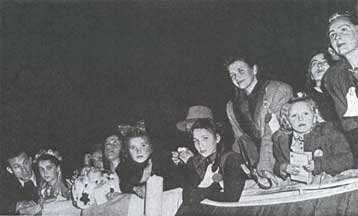Displaced Person Transports: Cargo of Hope
I came to the United States as a Displaced Person in 1949 at 6 years of age.For the first time in my life I had oranges, bananas, nickel Cokes in bottles out of a machine, and in the evening we saw black-and-white American movies where beautiful actresses wore strapless dress and gowns.
Displaced Persons were mostly Eastern Europeans: people who were unable or unwilling to return to their native countries after World War II. Some were "ostarbeiter" [eastern-workers] -- people forced to work in German factories and farms, some were survivors of concentration camps, and others fled to Germany to escape Communist rule. After the war they were housed in camps administered by the International Refugee Organization.
Eventually, the United States, Canada, Argentina, Brazil, Venezuela, Chile, and Australia opened their doors to the refugees. To emigrate to the U.S., a Displaced Person needed a sponsor who arranged for housing and employment [which could not replace an American worker]. For most refugees their embarkation point was Bremerhaven; others left via Italy or Shanghai.

Typical C-4 Troopship used to transport Displaced Persons

Crowded accommodations in the women's hold

First glimpse of their new country

Like other Displaced Persons, we soon found out that although the streets in America were not paved with gold, America was the land of golden opportunities.
www.USMM.org ©1998 - 2002. You may quote material on this web page as long as you cite American Merchant Marine at War, www.usmm.org, as the source.
No comments:
Post a Comment